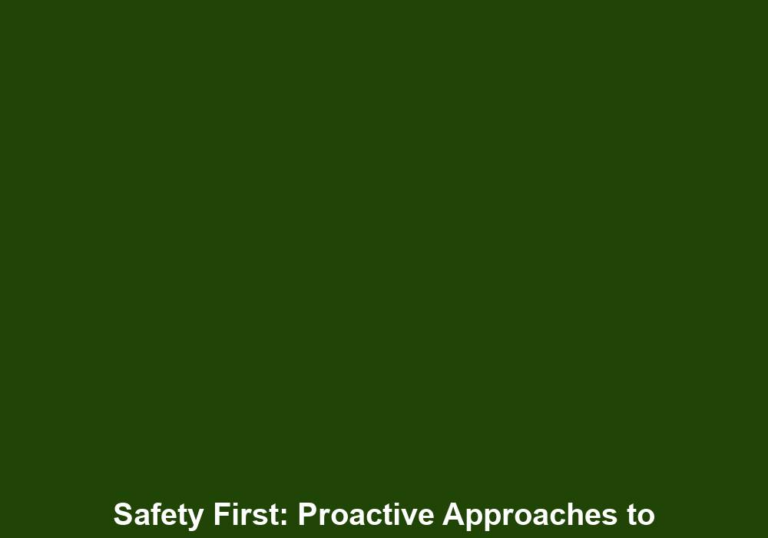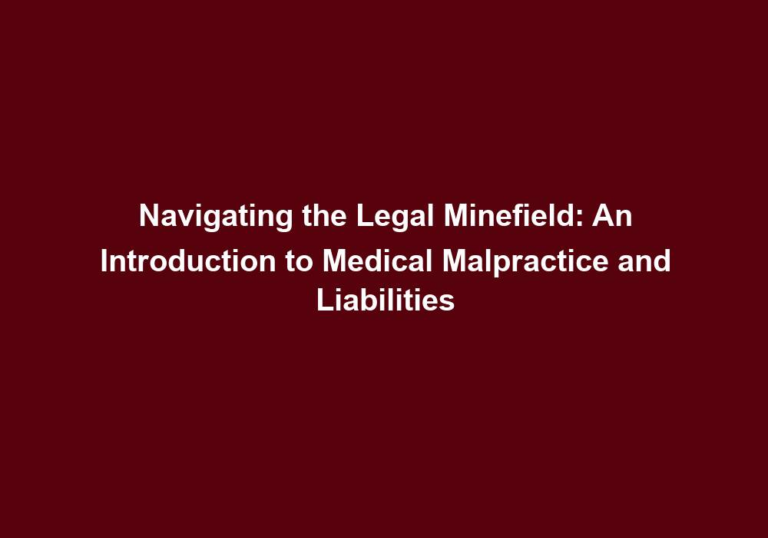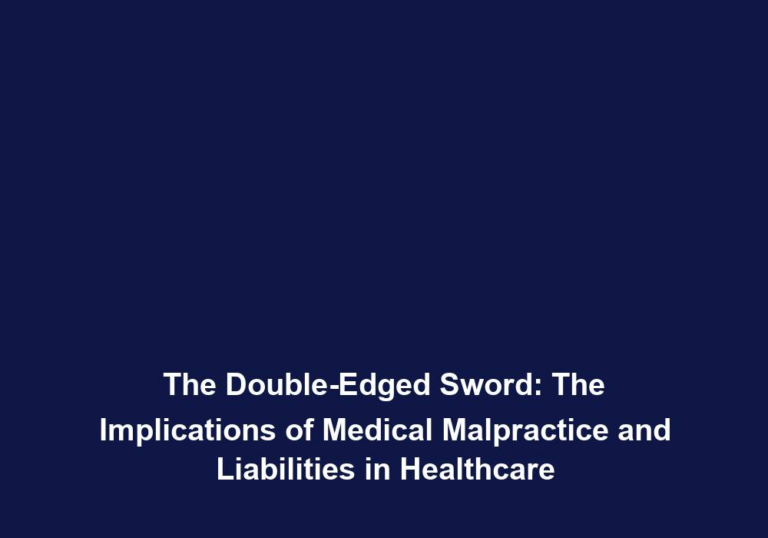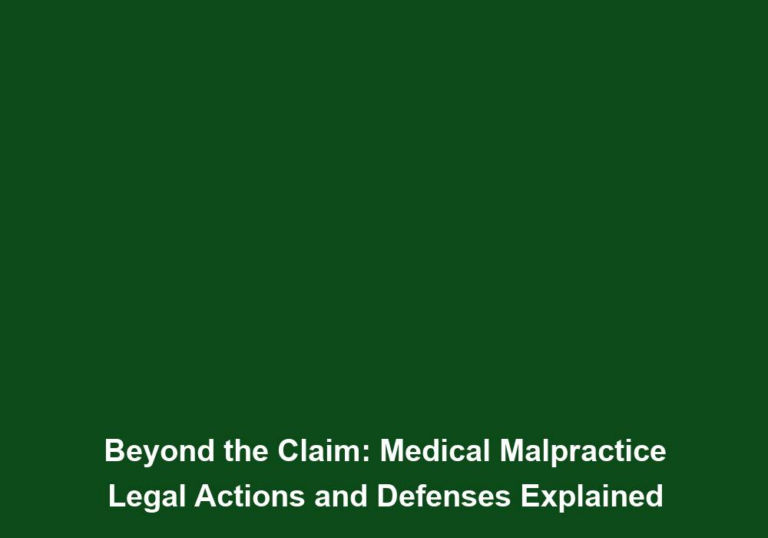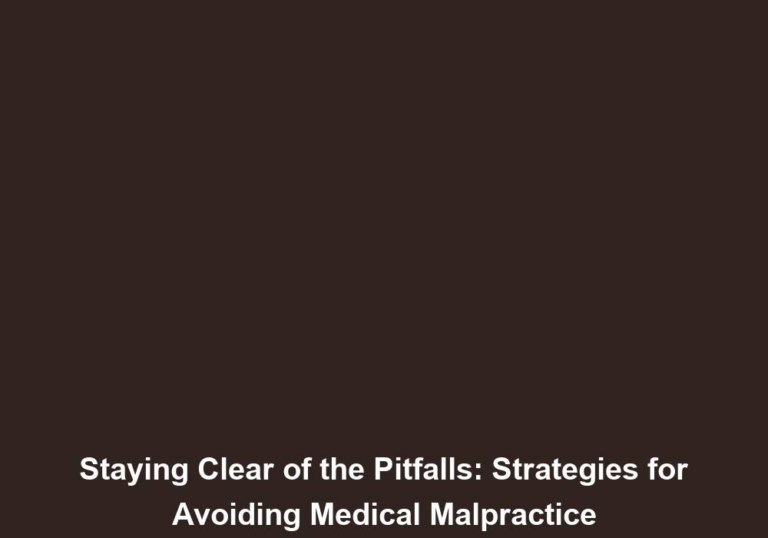Shielding Practices: Best Practices for Avoiding Medical Malpractice Claims
Medical professionals face numerous challenges in their practice, including the risk of medical malpractice claims. These claims arise from alleged negligence or misconduct by healthcare providers, often resulting in harm to patients. Shielding practices play a crucial role in minimizing the likelihood of such claims and safeguarding both patients and medical professionals.
In this article, we will delve into the best practices for avoiding medical malpractice claims. By implementing these strategies, healthcare providers can proactively mitigate risks and ensure the delivery of high-quality care.
Importance of Shielding Practices
Shielding practices encompass a range of preventative measures aimed at reducing the occurrence of medical errors and the resulting malpractice claims. By adhering to these best practices, medical professionals can enhance patient safety, maintain their professional reputation, and safeguard against legal repercussions.
Thorough documentation and communication, ongoing education and training, adherence to standard protocols and guidelines, informed consent and shared decision-making, emphasis on patient safety and quality improvement, and ethical and professional conduct are all essential components of effective shielding practices.
Thorough Documentation and Communication
Accurate and comprehensive documentation is the cornerstone of effective shielding practices. Healthcare providers should meticulously record all patient interactions, including examinations, diagnoses, treatments, and outcomes. Proper documentation helps establish a clear record of care, facilitates communication among care teams, and serves as crucial evidence in the event of a malpractice claim.
In addition to thorough documentation, effective communication with patients is paramount. Medical professionals should ensure that patients fully understand their diagnosis, treatment plans, and potential risks. Establishing open lines of communication enables patients to make informed decisions and reduces the likelihood of misunderstandings or dissatisfaction that may lead to claims.
To expand further, here are some key points regarding thorough documentation and communication:
- Documentation should include relevant medical history, medications, allergies, and any other pertinent information that may impact patient care.
- Healthcare providers should use standardized templates and guidelines for documenting patient encounters to ensure consistency and completeness.
- Clear and concise communication with patients helps build trust and fosters a collaborative relationship, reducing the likelihood of misunderstandings or miscommunication.
- Informed consent discussions should be documented thoroughly, including the risks, benefits, and alternatives to the proposed treatment or procedure.
- Effective communication among care teams, including nurses, specialists, and other healthcare professionals, is crucial for coordinated and comprehensive patient care.
Ongoing Education and Training
Medical knowledge and best practices are constantly evolving, necessitating continuous education and training for healthcare professionals. Staying updated on the latest research, technologies, and guidelines is vital in providing evidence-based care and minimizing the risk of errors.
Healthcare organizations should prioritize ongoing education and training programs for their staff. These programs can cover a wide range of topics, including new treatment modalities, patient safety protocols, and risk management strategies. By investing in their employees’ professional development, organizations can foster a culture of learning and improvement, ultimately reducing the potential for malpractice claims.
Here are some additional points to consider when it comes to ongoing education and training:
- Healthcare providers should participate in continuing medical education (CME) programs, conferences, and workshops to stay abreast of the latest advancements and research in their respective fields.
- Regular training sessions on patient safety, infection control, and medical error prevention should be conducted to reinforce best practices and enhance the skills of healthcare professionals.
- Utilizing simulation-based training and case reviews can help identify areas of improvement and ensure proficiency in handling complex medical scenarios.
- Encouraging healthcare professionals to pursue certifications and specialty training demonstrates a commitment to providing the highest standard of care and can contribute to reducing the risk of malpractice claims.
Adherence to Standard Protocols and Guidelines
Medical professionals should adhere to established standard protocols and guidelines when providing care. These protocols serve as evidence-based frameworks designed to ensure consistent and safe medical practices. By following these guidelines, healthcare providers minimize the chances of errors and deviations that could potentially lead to malpractice claims.
Professional organizations and regulatory bodies often establish these protocols, which cover various medical specialties, procedures, and patient populations. It is essential for healthcare providers to stay informed about these guidelines, implement them in their practice, and regularly review and update their protocols to reflect any changes or advancements.
Expanding on this topic, here are some key points regarding adherence to standard protocols and guidelines:
- Standard protocols and guidelines provide a framework for evidence-based decision-making, helping healthcare providers deliver consistent and high-quality care.
- Regularly reviewing and updating protocols ensures that healthcare professionals are aware of the latest advancements and recommendations in their field.
- Monitoring compliance with protocols through audits and quality improvement initiatives can identify areas for improvement and reduce the risk of errors that may lead to malpractice claims.
- Collaborating with colleagues and participating in interdisciplinary discussions can help ensure that best practices are followed and provide an opportunity for shared learning and improvement.
Informed Consent and Shared Decision-Making
Obtaining informed consent from patients is a critical aspect of shielding practices. Informed consent involves providing patients with comprehensive information about their condition, treatment options, potential risks, and expected outcomes. By engaging patients in shared decision-making, healthcare providers empower them to actively participate in their own care and make informed choices.
The process of obtaining informed consent should be documented carefully, including the discussions held, information provided, and any patient concerns or preferences. This documentation serves as evidence that the patient was adequately informed and participated in the decision-making process, reducing the potential for claims based on lack of consent or misinformation.
To further elaborate, here are some important points to consider regarding informed consent and shared decision-making:
- Healthcare providers should use clear and jargon-free language when explaining medical conditions, treatment options, and potential risks to ensure patients fully understand the information.
- Providing written materials, visual aids, or multimedia resources can enhance patient comprehension and aid in the informed consent process.
- Actively listening to patients’ concerns, answering their questions, and addressing any misconceptions or fears they may have can foster trust and facilitate shared decision-making.
- Documenting the informed consent process, including discussions held, risks explained, and patient questions answered, helps protect both the patient and the healthcare provider in case of a malpractice claim.
- In cases where patients may lack decision-making capacity, healthcare providers should involve family members or legal representatives in the decision-making process while adhering to legal and ethical guidelines.
Emphasis on Patient Safety and Quality Improvement
Prioritizing patient safety and quality improvement initiatives is crucial in preventing medical malpractice claims. Healthcare organizations should establish comprehensive programs aimed at identifying potential risks, implementing preventive measures, and continuously monitoring outcomes.
These programs may include regular safety training sessions, incident reporting systems, root cause analysis of adverse events, and the implementation of evidence-based practices to enhance patient safety. By focusing on continuous quality improvement, healthcare providers can identify areas of weakness, address them promptly, and consistently provide safe and effective care.
To provide a more comprehensive view, here are some key points regarding patient safety and quality improvement:
- Implementing a culture of safety within healthcare organizations encourages reporting of near misses, adverse events, and errors, promoting transparency and learning from mistakes.
- Establishing multidisciplinary safety committees can facilitate the identification of potential risks and the development of strategies to mitigate them.
- Regular safety training sessions and drills can help healthcare professionals respond effectively to emergencies and prevent errors.
- Conducting root cause analysis of adverse events can identify underlying systemic issues and guide the implementation of preventive measures to avoid similar incidents in the future.
- Implementing evidence-based practices, such as checklists, standardized protocols, and guidelines, can reduce variability in care delivery and improve patient outcomes.
Ethical and Professional Conduct
Maintaining high ethical and professional standards is essential for healthcare professionals to avoid malpractice claims. This includes treating all patients with respect, ensuring confidentiality, and acting in the best interest of the patient at all times.
Healthcare providers should also establish appropriate boundaries with patients and avoid conflicts of interest that may compromise the quality of care. By adhering to a strict code of conduct and ethics, medical professionals build trust with their patients, maintain their reputation, and mitigate the risk of malpractice claims.
Expanding on this topic, here are some additional points to consider regarding ethical and professional conduct:
- Respecting patient autonomy and privacy is fundamental. Healthcare providers should obtain explicit consent before sharing patient information and ensure that confidentiality is maintained at all times.
- Avoiding dual relationships or conflicts of interest, such as financial incentives or personal relationships that may influence medical decisions, is crucial to maintain the integrity of patient care.
- Treating all patients with dignity, empathy, and cultural sensitivity fosters a positive therapeutic relationship, reduces the risk of claims based on patient dissatisfaction, and promotes patient-centered care.
- Participating in ethical consultations or seeking guidance from ethics committees can help healthcare professionals navigate complex ethical dilemmas and ensure the highest standard of care.
- Upholding professional boundaries, such as maintaining appropriate relationships with patients and refraining from improper personal or professional conduct, is essential in preventing malpractice claims.
Conclusion
Shielding practices are crucial for healthcare professionals to minimize the occurrence of medical malpractice claims. Through thorough documentation, ongoing education, adherence to standard protocols, informed consent, emphasis on patient safety, and maintaining ethical conduct, medical professionals can significantly reduce risks and provide high-quality care.
By implementing these best practices, healthcare organizations can foster a culture of safety, continuous improvement, and accountability. Ultimately, this leads to enhanced patient outcomes, increased patient satisfaction, and a reduced likelihood of medical malpractice claims.


